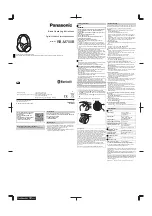
2
Cisco WRVS4400N Wireless-N Gigabit Security Router with VPN Administration Guide
16
Networking and Security Basics
This chapter describes networking and security basics. It includes the following
sections:
•
“An Introduction to LANs” on page 16
•
“The Use of IP Addresses” on page 17
•
“The Intrusion Prevention System (IPS)” on page 19
An Introduction to LANs
A router is a network device that connects two networks together.
The router connects your local area network (LAN), or the group of personal
computers in your home or office, to the Internet. The router processes and
regulates the data that travels between these two networks.
The router’s Network Address Translation (NAT) technology protects your network
of personal computers so users on the Internet cannot “see” your personal
computers. This is how your LAN remains private. The router protects your
network by inspecting the first packet coming in through the Internet port before
delivery to the final destination on one of the Ethernet ports. The router inspects
Internet port services like the web server, FTP server, or other Internet
applications, and, if allowed, it will forward the packet to the appropriate personal
computer on the LAN side.
You can use multiple Cisco WRVS4400N Wireless-N Gigabit Security Routers to
connect multiple LANs together. This usually applies to a medium-sized or larger
company where you want to divide your network into multiple IP subnets to
increase the intranet throughput and reduce the size of the IP broadcast domain
and its interference. In this case, you need one WRVS4400N wireless router for
each subnetwork and you can connect all the WAN ports to a second level router
or switch to the Internet.
















































